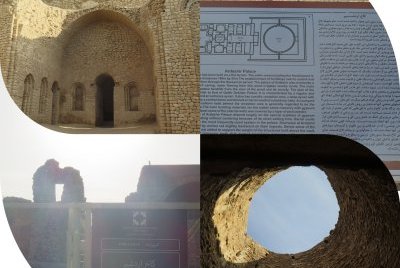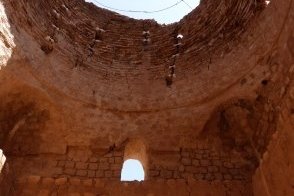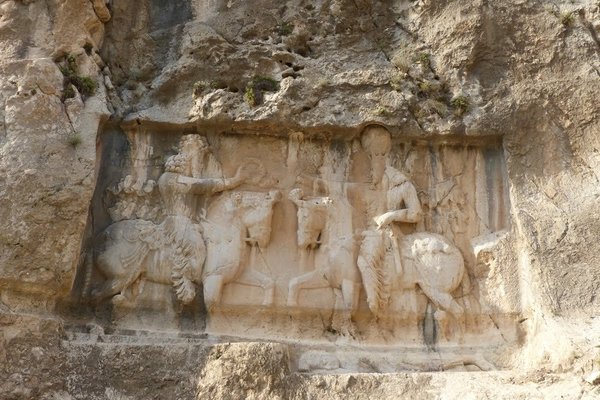Iran
Sassanid Archaeological Landscape
The Sassanid Archaeological Landscape of Fars region covers monumental buildings, inscriptions, and other relevant relics of the three main cities of the Sassanid Empire.
The archaeological sites stand out for their rock carvings and sculptures. The empire is also known for its contribution to the distribution and establishment of Zoroastrianism, and the site includes major Zoroastrian monumental architecture such as the Takht-e Neshin fire temple.
Community Perspective: Solivagant visited two of the ancient cities, Bishapur and Sarvestan, and recommends the bas-reliefs. The "main" location, Firuzabad, so far stays unreviewed.
Site Info
Official Information
- Full Name
- Sassanid Archaeological Landscape of Fars Region (ID: 1568)
- Country
- Iran
- Status
-
Inscribed 2018
Site history
History of Sassanid Archaeological Landscape
- 2018: Revision
- Extended from TWHS Firuzabad Ensemble (1997)
- 2018: Advisory Body overruled
- ICOMOS advised Deferral + deletion of Savestan component; both overturned after amendment lead by Spain
- 2018: Inscribed
- Inscribed
- Type
- Cultural
- Criteria
- ii
- iii
- v
Links
- UNESCO
- whc.unesco.org
- Official
-
- visitiran.ir — Visit Iran
All Links
UNESCO.org
- whc.unesco.org — whc.unesco.org/
Official Website
- visitiran.ir — Visit Iran
Community Information
- Community Category
- Archaeological site: Near Eastern
Travel Information
Red Zone Travel Advisory
Shiraz Hotspot
Recent Connections
-
Red Zone Travel Advisory
Iran fully off-limits -
Brick architecture
The brick dome and brick ceilings of th… -
Already inscribed still on T List
Firuzabad Ensemble TWHS
Connections of Sassanid Archaeological Landscape
- History
-
-
Sassanid Empire
-
Parthian Empire
remains of a previous Parthian settlement in Bishapur -
Located in a Former Capital
first capital of the dynasty
-
- Architecture
-
-
Brick architecture
The brick dome and brick ceilings of the Sarvestan Palace. -
Stand-alone Rock Reliefs
Firuzabad, Fars and Bishapur have groups of Sassanian reliefs, the former including the oldest, a large battle scene, now badly worn. (wiki)See en.wikipedia.org
-
Domes
Sarvestan Palace among others
-
- World Heritage Process
-
-
Reconstruction regarded as unsatisfactory
include today a large percentage of new materials, namely plaster and black cement, with new stones used for the facing of the walls. This situation, in ICOMOS’ view, directly affects the authenticity of the monuments within the nominated property. (AB ev) -
Already inscribed still on T List
Firuzabad Ensemble TWHS
-
- Religion and Belief
-
-
Zoroastrianism
Includes bas relief depicting Ardashir’s investiture by Ohrmazd, the Zoroastrian creator God. Plus remains of fire temples
-
- Human Activity
-
-
Irrigation and drainage
rock cut reservoirs in Bishapur
-
- Constructions
-
-
Notable Bridges
5th century Mihr Narseh Bridge (actually outside the current boundaries, but feature heavily in the dossier and need for boundary modification) -
Monumental Monoliths
The Collosal Statue of Shapur I was carved out of a stalagmite.See en.wikipedia.org
-
- Timeline
-
-
Built in the 3rd century
date back to the earliest and latest moments of the Sassanian Empire, which stretched across the region from 224 to 658 CE (AB ev)
-
- WHS Hotspots
-
-
Shiraz Hotspot
Sarvestan is 1 hr 15 mins, Firuzabad 1hr 45mins and Bishapur 2 hrs 15 mins
-
- Visiting conditions
-
-
Red Zone Travel Advisory
Iran fully off-limits
-
News
No news.
Community Reviews
Show full reviews
I visited in 2019 just after it had been inscribed although the signs still didn't have any UNESCO logos. It was in English though, and well written, all that matters. There are many locations by the way. I stayed at a small place in Atashkadeh and had the Ardashir Palace just next to me but on the day of arrival it was too late - I saw it in the dark but why I would bother to check out shades. In the morning it was a good time to visit. In retrospective I may have added more of the sites on my journey but I don't find these too interesting. It was free and unprotected but for the flimsy gate. It may have better protection now but it's also in the middle of nowhere so nobody really "threatens" these. I think no maintenance is more of a hazard.
The main view was the domed hall. It has not much decoration and your main attractions are windows and doorways. It looks dull, yes, so do more research to understand why you are actually visiting. This surely isn't Persepolis!
You can see this place in 30 minutes easily which is why I was staying next door and had a quick look. Maybe the other sites are better but I doubt it. I could also do more research on this but we already have an academic review by Solivagant so please read his for more insight. Add this on your trip …
Keep reading 0 comments
If ever nominated, this site would cover archaeological remains of the last pre-Islamic Iranian dynasty – the “Sassanids” (AD 224-651) whose empire stretched to the Levant, Central Asia, E Arabia and Turkey/the Caucusus. Succcessors to the Parthians, they too were involved militarily across their entire period against the Romans in the form of the Byzantine Empire and, having fought them to a mutual “standstill”, were in no position to oppose the new threat from the south of invading Arab Muslims, who largely overcame them in a period of just 4 years from 628-32 and changed Iran for ever.
The 3 “cities” are situated around 100kms west (Bishapur), south (Firuzabad) and east (Sarvestan) of Shiraz. In May 2015 We visited Bishapur and Sarvestan, and I somewhat regret not having taken in the 3rd at Firuzabad, which, from what I have read, possibly contains the “best” remains!
Sarvestan can be covered very quickly as it covers just a single building from 5th C AD. Although it is titled a “Palace”, its actual function isn’t understood. Its isolated location is quite appealing and its twin domes and iwans are, apparently, of some significance architecturally, involving “squinches”! My review photo is chosen purely to try to "show off" what are the building's most famous features - though I understand if they don't impress!! Sassanian architecture is of historical importance both for its innovation and also its incorporation of influences from e.g Byzantium and for providing a number of concepts which were later …
Keep reading 0 comments
